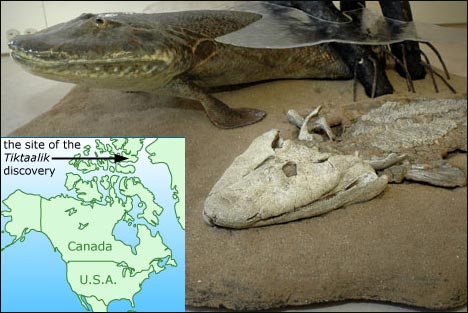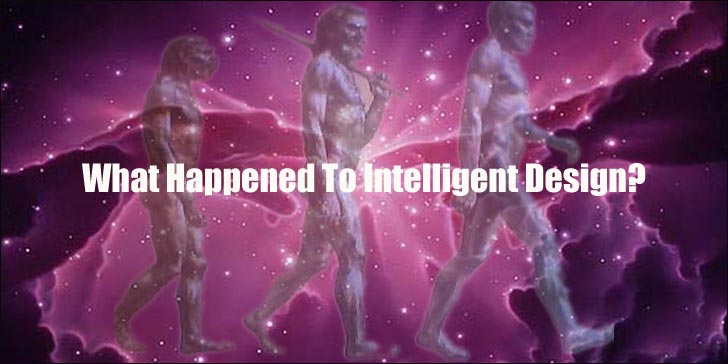
What exactly is Intelligent Design?
© 2011 By Gary Vey for viewzone Although I have heard of the phrase "Intelligent Design" before, I assumed I understood what the concept was all about -- because of the name. The fact that it was the source of so much controversy is what intrigued me to look deeper. I needed to find out what all the fuss was about. It is apparent to any student of science that the natural world is an amazing and complex phenomenon. From the realm of quantum particles to the infinite universe, there is pattern. It appears to humans that this pattern must have been planned, or designed. The recognition of this "designer", call it God, the Creator or the Force, was my understanding of what was meant by Intelligent Design. But I was wrong. The Intelligent Design movement has created a pantheon of dogmatic concepts that has taken the discussion about the creation of the universe to some pretty weird places. By injecting extreme religious beliefs into the debate they have drawn venom from the scientific community. The first thing that popped up in my web search was an article posted in ScienceDaily:
Ouch! I suppose we all fear death to some degree. Was this kind of attack by scientists really deserved? What's the real opposition to Intelligent Design? Some Basic Principles of "ID" Whatever Intelligent Design was seling, Science wasn't buying. They reacted by portraying ID as a "non-science", or even worse, a "religion". When I eventually learned about Intelligent Design (ID) I was very disappointed. Most of what I read about ID was full of the same surprising claims. The most bizarre one was that all of the species that ever lived on the Earth, from past to present, were created whole and complete. There was absolutely no evolution allowed in the ID belief system. There were many references to the Biblical account of Creation (Genesis), Adam and Eve, the Garden of Eden and the belief that this whole creation is just a little over 5,700 and 10,000 years old. I'm pretty sure it's the story about Adam and Eve being "created" by God that is the basis for Intelligent Design's stance against evolution. Since God is perfect, say the Intelligent Design proponents, he created man (Adam) perfect.
"So God created man in His Own Image, in The Image of God He created him." -- Genesis 1 And when God reflected on his creation of man, he was satisfied.
"God saw all that he had made, and it was very good. And there was evening, and there was morning -- the sixth day." Genesis 1:27-31 Merging respect for a Creator with the sciences is something that has, in the past, inhibited the acceptance of new ideas. It's easy to understand why these two realms of inquiry must have emnity. This reconciliation probably never had a chance to succeed and now the debate has turned into a circus dominated by religious sects believing in Creationism. What began as the assertion that the universe could have been planned by some intelligence, perhaps something beyond our ability to understand, Intelligent Design has become a "faith", with add-ons and strict dogmas which up the ante in winning over the Darwin Evolution crowd. Putting the religious bias aside, here are some common scientific marvels that ID believers use to support their view. Some of them are truly amazing. The Flagellum's Rotary Engine Flagellum are tiny bacteria -- one cell -- that have a tail and use it to move through a liquid. Upon close examination of the tail, biologists noticed that the tail is actually rotated like an axle and powered by a biological "rotary motor" made of 15 distinct parts.
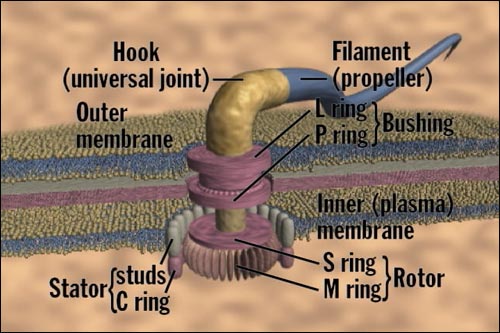 The engine itself [above] is about 1/100,000th of an inch wide -- far smaller than can be seen by the human eye. [6] For the motor to work and have any benefit to the flagellum, all 15 parts must function perfectly. If one part fails, the motor will not turn. So the question is then passed back to the Evolutionists. "How did this motor evolve?" There is no possibility for gradual trial and error in developing the motor. It had to have all 15 parts already assembled. It couldn't be just a beneficial mutation. It must have been planned... designed. Then there are complex ecosystems which do not seem to have been accidental. The tiny flagellum gets together with a normally immobile protozoa inside the intestines of a termite. It attaches itself to the protozoa and moves it around so the wood can be digested and secreted as "food" for the termites. Without this arrangement between three unique organisms, the termite could not exist. How did this arrangement evolve? What resisted "survival of the fittest" and caused competing organisms to cooperate? In the book, Billions of Missing Links, a similar example is given:
"Another multititered symbiotic relationship exists between certain ants, aphids, and millions of buchnera bacteria. Ants manage aphids like a dairy farmer might care for cows. In exchange for protection, these domesticated aphids make a nutritious, sugary foodstuff for the ant colony. The buchnera, who live within the aphid intestines, help the aphids manufacture their life-sustaining proteins." [4] The Bible is the authority, according to most ID proponents, when trying to understand how the universe began. What does Evolution have to do with Intelligent Design anyway? The whole ID argument goes something like this:
While the first item is relevant, the arguments about evolution are now unfortunately the embodiment of the face-off between Intelligent Design and the atheism of pure science. The ID believers will not consider a more complex and brilliant design of life that can modify itself over many generations to better survive its environment -- a handy thing to have had on such a geologically unstable planet. It is a superior plan! But the ID people have got to maintain that the Biblical story of Adam and Eve is literally true. So regrettably, there's no evolution. I was recently sent this article, also from ScienceDaily.com, which describes how a single gene was responsible for the growth of the cerebral cortex, making things like language, civilization and the internet possible. Evolutionists will say that this demonstrates how "accidental" mutations can improve a species without any intelligence required. It just happens. In Evolution, an accidental mutation will sometimes be beneficial to the organism and, over many generations, more offspring will contain this mutation until it becomes the norm. Intelligent Design proponents might look at how amazingly complex the human genome is, and that a single gene could be designed to turn on intelligence at the opportune time in the organisms development. That's a more superior design worthy of some reverence! But the ID movement won't allow that. anything supporting Evolution is verboten. Here is the story:
The Scientific Argument Against Intelligent Design My review of the Scientific literature against Intelligent Design exposed an embarrassing moment and the top-10 list for flaws in nature that behoove you to believe in an intelligent Creator. I'll just discus one, but it's a pretty significant one.
Pulsars are highly magnetized, rotating neutron stars that emit a beam of electromagnetic radiation. The radiation can only be observed when the beam of emission is pointing towards the Earth. The interval between observed pulses is very regular. For some pulsars, the regularity of pulsation is as precise as an atomic clock. After this discovery, scientists had to redefine their concept of intelligence. They decided to look for prime numbers in the communication instead of regular pulses. But maybe even this concept is too fundamental for intellectually advanced aliens. In truth, we cannot even imagine capabilities beyond our own human experience. We are ignorant to the extremes of power, intellect and consciousness, and should not attempt to define them as attribues of nature or deity. Re-defining Intelligence If the universe was intelligently designed, scientists think the designer has some explaining to do for what they observe in space. Instead of being the orderly and ideal environment for humanity to call "home", the surrounding creation is full of ominous catastrophes and collisions that regularly blot out entire planets in the blink of an eye, without warning. One example is a phenomenon called a Gamma Ray Bursts (GRB). These are supernova objects that emit extremely powerful and highly concentrated beams of deadly gamma rays. They are all around us in every direction, firing off at the rate of several per minute.
A review of other bursts showed that their assumptions had been wrong. All of the gamma ray bursts they were observing were from other galaxies far, far away. The amount of energy coming from objects so distant was a real shock. No one had ever imagined such powerful bursts could be generated by galactic centers. The thought of a burst coming from our own Milky Way galactic center was abysmal. A burst of the same intensity as the 1997 event, originating from inside the Milky Way, would deliver 100,000 time the lethal dose of radiation, killing every life form that was exposed. Could that really happen to us? This question was answered on August 27th, 1998 when an unusual 5 minute gamma ray pulse was located just 20,000 light years away in the constellation of Aquila. This may sound like a huge distance, but to astronomers this is just "next door." The Milky Way Galaxy, for example, is just 100,000 light years from end to end. The 1998 event was close enough and strong enough to ionize Earth's upper atmosphere, damage a couple of spacecraft and disrupt global communication. Since then astronomers place gamma ray bursts from our own Galaxy's core at the top of the list of things we don't want to happen. Since the odds are that every planetary body will eventually get hit by a GRB, either from space or our own Galactic core, we might consider our civilization as a temporary phenomenon occurring between random extinction events. Before Aquila, scientists just feared exploding stars -- novas and supernovas. Now things are different. It's like living in a ghetto and fearing drive-by shootings and random bullets. Then one day you learn that there's a nuclear bomb down the street, waiting to explode. Was this intelligently designed? Evolution... again! Far too much time is devoted to asserting that Darwin's evolution is valid. It's not an easy job these days with the recent discovery of epigenetics. Dramatic evolutionary changes can happen very quickly -- even in the same species and during its lifetime -- and epigenetics is showing just how brilliant the whole scheme of genetics can be. I suggest readers check our report on Eugentics in viewzone. Volumes of books, such as Intelligent Thought: Science Versus The Intelligent Design Movement show fossils and charts showing that Evolution is a science with proof while Intelligent Design lacks science. Again, this battlefield is evolution.
Missing In Action
Evolutionists like to claim that Intelligent Design is not a science. They claim that a real science allows one to predict discoveries which will further support its theme. Regarding humans, the idea was predicted that there should be some evidence of a primate in the transition from ape to man. The 1970s discovery of "Lucy" by Johanson and Gray in Ethiopia seemed to meet this criteria. The bones showed it walked on two legs like modern man, yet the features were more ape like. The bones of Lucy were found almost 2 miles apart. Because no duplicates were found, it is assumed that they all belonged to the same individual. This is often criticized by Intelligent Design believers. But again, it's because of their strict Biblical interpretation that they reject evolutionary theory. Tiktaalik Another "missing link" was found, as predicted, in the transition of fish to amphibians. Called a Tiktaalik, this 375 million year old fossil made headlines as soon as its discovery was announced in April of 2006. Unearthed in Arctic Canada by a team of researchers led by Neil Shubin, Edward Daeschler, and Farish Jenkins, Tiktaalik is technically a fish, complete with scales and gills -- but it has the flattened head of a crocodile and unusual fins.
"Its fins have thin ray bones for paddling like most fish, but they also have sturdy interior bones that would have allowed Tiktaalik to prop itself up in shallow water and use its limbs for support as most four-legged animals do. Now what?
 Most of us are familiar with entropy. One of the ideas involved in the concept of entropy is that nature tends from order to disorder in isolated systems. This tells us that the right hand box of molecules [above] happened before the left. [8] In the fabric of nature, ie. the atomic particles (the ultimate LEGO set), DNA and consciousness, we see the opposite. Simple parts combine to create complexity and interconnectedness. Apparent chaotic events, like the death of a star, are also catalysts of a higher order when viewed in a larger time. It really does appear that some type of pattern or order is being imposed on the universe. Somewhere in my readings was the example of sand dunes in a desert. Their shape is actually a record of the action of the wind -- proof that wind exists. While wind cannot be directly seen or experienced, its effects can be. Likewise, the entity that created the organization we know as the universe can never be successfully understood or represented conceptually by our limited minds, but the effects of the entity are quite readily observed by everyone. Acknowledging this fact should have been simple and unopposed by the scientific community. They face unexplained phenomenon continually in their examination of the fabric of the universe. But their resistance is understandable if the proponents of Intelligent Design insist on a Biblical definition of God. It's not so much that Science doesn't trust God. It's more the fact that the Bible required the assistance and cooperation of some humans and their limited language to record, interpret and translate the words of God. There's too much human error possible to accept the Bible as the literal word of God. Evolution is compatible with a truly intelligent design for life. Developing planets have a wide variation in temperature, moisture, radiation and food availability. To survive these harsh changes there must be some adaptive ability built into the design. The inherent process of evolution is a superior and more complex solution to the design problem. Making a basic prototype would have failed. Evolution is a more worthy and higher system. It elevates the designer. Our language is made of sounds with which we associate ideas. The ideas have to be shared by both parties when we communicate. Our ideas are things we have commonly experienced. The more we have shared the same experience, the more accurate a literal account of that experience will be. Insisting on taking the Bible as the literate word of God limits the power and potential of that God because the descriptions used are pertinent only to human experience and intellect. We err to define God. We can only wonder at the effects we see in the world around us. But I could very well be completely wrong! Editor's Note: Please submit your comments. I'd like to hear some opposing views.
Notes: [1] Mehmet Bakircioglu et al. The Essential Role of Centrosomal NDE1 in Human Cerebral Cortex Neurogenesis. The American Journal of Human Genetics, 28 April 2011 DOI: 10.1016/j.ajhg.2011.03.019 [2] Jessica L. Tracy, Joshua Hart, Jason P. Martens. Death and Science: The Existential Underpinnings of Belief in Intelligent Design and Discomfort with Evolution. PLoS ONE, 2011; 6 (3): e17349 DOI: 10.1371/journal.pone.0017349
[3] Mehmet Bakircioglu et al. The Essential Role of Centrosomal NDE1 in Human Cerebral Cortex Neurogenesis. The American Journal of Human Genetics, 28 April 2011 DOI: 10.1016/j.ajhg.2011.03.019 [4] Geoffrey Simons, MD, Billions of Missing Links, 2007, Harvest House Publications. ISBN 13: 978-0-7369-1746-9 [5] Mehmet Bakircioglu et al. The Essential Role of Centrosomal NDE1 in Human Cerebral Cortex Neurogenesis. The American Journal of Human Genetics, 28 April 2011 DOI: 10.1016/j.ajhg.2011.03.019 [6] http://creationevolutiondesign.blogspot.com/2005/10/dawkins-on-bacterial-flagellums-tiny.html [7] http://evolution.berkeley.edu/evolibrary/news/060501_tiktaalik [8] http://hyperphysics.phy-astr.gsu.edu/hbase/therm/entrop.html [9] http://law2.umkc.edu/faculty/projects/ftrials/conlaw/evolution.htm
COMMENTS: Evolution postulates that given enough time, that the average scrap-yard would self-produce a Boeing 747 style aircraft. Humans are just a bit more complex than said aircraft.....oh, and did I mention that humans, unlike the 747, are alive? Intelligent design is the intelligent choice. Evolution violates the Laws of Thermodynamics, again and again, a very self-defeating proposition. Surfundeep Dear Sir, Judging by what you write it looks as if "Intelligent Design" has solidified into Biblical Creation just with a different name. That is too bad because intelligent design is actually what we see wherever we look and now to use those words conjures up Biblical Creationism which is not what I mean. I have studied intensely both the Bible and Evolution and many other subjects that surround both fields for over 40 years. I simply want to share some of my insights about this 100 year old debate. This "battle", and it IS a battle, is not between science and religion. It is a war between two belief systems, Evolutionary Theory and Biblical Creationism. Science is not the final arbiter of truth but neither is religion. So for an evolutionist to say "something is not 'scientific' and is therefore not true" is as meaningless as it is for the Pope to say "something is not 'Catholic' and is therefore not true". Evolution, in all it's flavors; Darwinian, Punctuated Equilibrium, etc. is demonstrably wrong. It is demonstrably wrong within its own belief system, that is, through Science. Never mind the objections of religionists. The Bible, in all its flavors; Catholicism, Judaism, Protestantism etc. is demonstrably, not infallible truth. It is demonstrably wrong within its own belief system, that is, through the Bible. Never mind the objections of Evolutionists. That Evolution is wrong does not mean that Biblical Creationism is correct... and vice versa. The war between Evolution and Biblical Creationism is a propaganda war between two belief systems and it is being waged for all the same reasons that wars in the past have been waged; power, money, pride etc. That's all I wanted to say. Thank you for allowing me to comment. Best Regards, Brian M.
|



 The findings, reported April 28 in the American Journal of Human Genetics, are based on a genetic analysis of in one Turkish family and two Pakistani families with offspring born with the most severe form of microcephaly. The children have brains just 10 percent of normal size. They also lacked the normal cortical architecture that is a hallmark of the human brain. This combination of factors has not been seen in other genes associated with the development of the human brain, the authors note.
The findings, reported April 28 in the American Journal of Human Genetics, are based on a genetic analysis of in one Turkish family and two Pakistani families with offspring born with the most severe form of microcephaly. The children have brains just 10 percent of normal size. They also lacked the normal cortical architecture that is a hallmark of the human brain. This combination of factors has not been seen in other genes associated with the development of the human brain, the authors note. The embarrassing moment happened when astronomer Jocekyn Bell Burnell (1967) recorded a pulse from deep space that was in a cyclical patter, just under a second. The signal was called LGM (Little Green Men) and was thought to be an intelligent civilization trying to get our attention. Sadly, it turned out to be a special kind of dying star, called a pulsar.
The embarrassing moment happened when astronomer Jocekyn Bell Burnell (1967) recorded a pulse from deep space that was in a cyclical patter, just under a second. The signal was called LGM (Little Green Men) and was thought to be an intelligent civilization trying to get our attention. Sadly, it turned out to be a special kind of dying star, called a pulsar.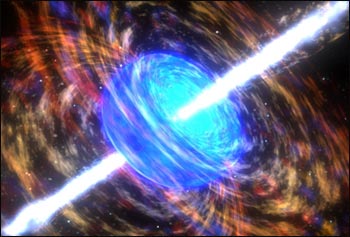 Astronomers have known about intense radiation from space since the 1970s. Multiple bursts of powerful gamma rays were routinely detected and believed to originate from stars in the Milky Way. Assuming this energy originated locally, astronomers concluded this type of gamma ray burst was insignificant and harmless. Then, in December 1997, they had the technology and good luck to catch a strong gamma ray burst and track it. The source was not inside the Milky Way Galaxy. It was from a distant galaxy billions of light years away.
Astronomers have known about intense radiation from space since the 1970s. Multiple bursts of powerful gamma rays were routinely detected and believed to originate from stars in the Milky Way. Assuming this energy originated locally, astronomers concluded this type of gamma ray burst was insignificant and harmless. Then, in December 1997, they had the technology and good luck to catch a strong gamma ray burst and track it. The source was not inside the Milky Way Galaxy. It was from a distant galaxy billions of light years away.

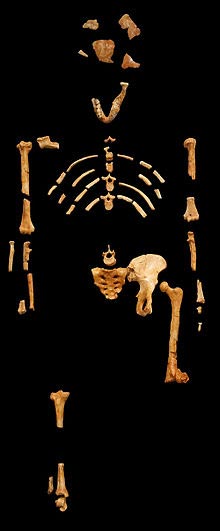 LUCY -- Australopithecus
LUCY -- Australopithecus